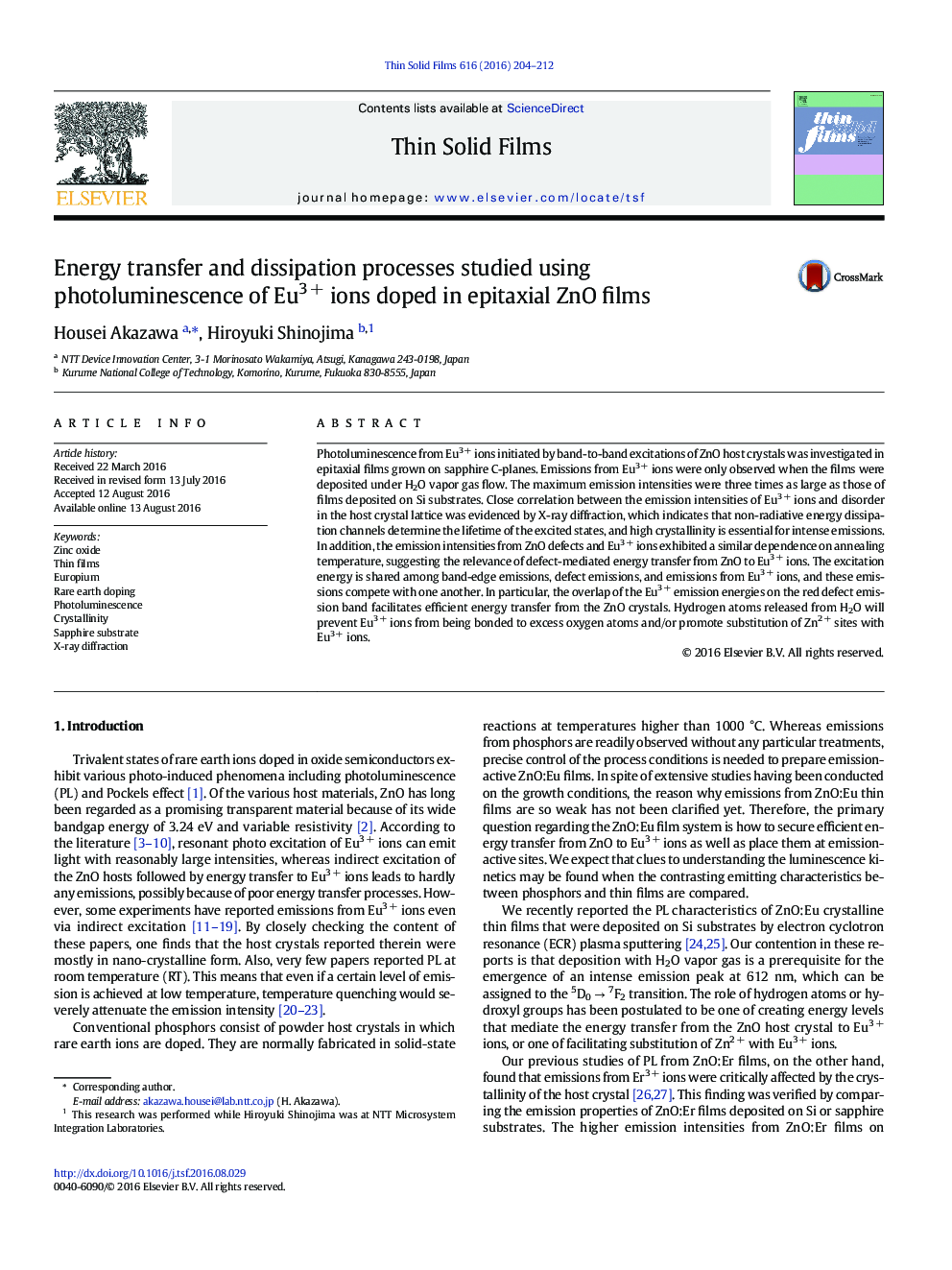| کد مقاله | کد نشریه | سال انتشار | مقاله انگلیسی | نسخه تمام متن |
|---|---|---|---|---|
| 1663749 | 1517994 | 2016 | 9 صفحه PDF | دانلود رایگان |

• Photoluminescence from epitaxial ZnO:Eu films on sapphire C-planes was investigated.
• Emissions from Eu3 + were only observed when the films were deposited with H2O gas.
• The emission intensities on sapphire were three times as large as those on Si substrates.
• Emission intensities and disorder in the host crystal are closely correlated.
• We propose the relevance of defect-mediated energy transfer from ZnO to Eu3 +.
Photoluminescence from Eu3 + ions initiated by band-to-band excitations of ZnO host crystals was investigated in epitaxial films grown on sapphire C-planes. Emissions from Eu3 + ions were only observed when the films were deposited under H2O vapor gas flow. The maximum emission intensities were three times as large as those of films deposited on Si substrates. Close correlation between the emission intensities of Eu3 + ions and disorder in the host crystal lattice was evidenced by X-ray diffraction, which indicates that non-radiative energy dissipation channels determine the lifetime of the excited states, and high crystallinity is essential for intense emissions. In addition, the emission intensities from ZnO defects and Eu3 + ions exhibited a similar dependence on annealing temperature, suggesting the relevance of defect-mediated energy transfer from ZnO to Eu3 + ions. The excitation energy is shared among band-edge emissions, defect emissions, and emissions from Eu3 + ions, and these emissions compete with one another. In particular, the overlap of the Eu3 + emission energies on the red defect emission band facilitates efficient energy transfer from the ZnO crystals. Hydrogen atoms released from H2O will prevent Eu3 + ions from being bonded to excess oxygen atoms and/or promote substitution of Zn2 + sites with Eu3 + ions.
Journal: Thin Solid Films - Volume 616, 1 October 2016, Pages 204–212